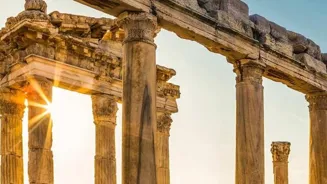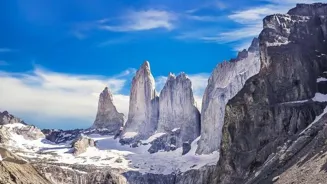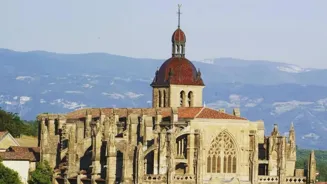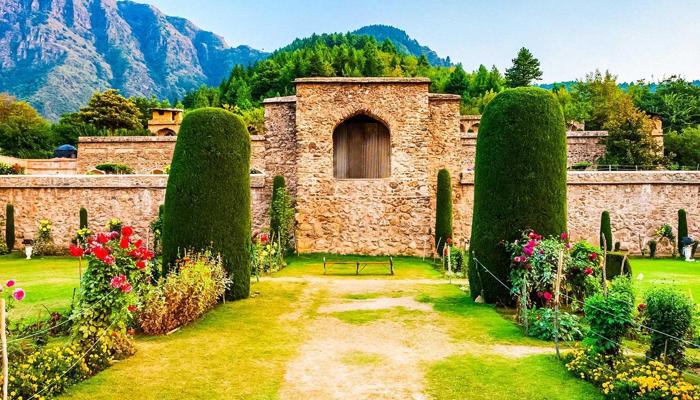Unveiling History's Wonders: 10 Sites that Shaped Our World - Explore these timeless treasures and delve into the past!
Namaste readers! Ever felt like stepping into a time machine and witnessing history
unfold right before your eyes? Well, you might not need a fancy contraption for that. Our world is dotted with amazing historical sites, each a silent storyteller whispering tales of bygone eras.
These places aren't just pretty pictures for your Instagram; they are the foundation upon which our present stands.
Come, let's embark on a journey to explore ten such sites that have profoundly shaped our world, offering glimpses into the lives, innovations, and sometimes, the struggles of those who came before us. These locations offer education.
Visit the Taj Mahal, symbol of love and Mughal artistry in India
Starting our adventure in India, we visit the Taj Mahal, an ivory-white marble mausoleum on the bank of the Yamuna river in the Indian city of Agra. It was commissioned in 1632 by the Mughal emperor, Shah Jahan to house the tomb of his favorite wife, Mumtaz Mahal.
The Taj Mahal stands not just as a monument of love, but also as a testament to the artistic and architectural prowess of the Mughal era. It's intricate carvings depicting natural elements, the perfectly symmetrical layout, and the sheer grandeur of the structure are a wonder to behold.
But beyond the aesthetics, the Taj Mahal speaks volumes about the society, the economy, and the cultural influences that shaped Mughal India. It showcases the skills of artisans not only from India but also from Persia and Central Asia, reflecting the cosmopolitan nature of art.
The Taj Mahal is a cultural repository of the past.
The Great Wall of China: Symbol of resilience, defense, and civilization's determination
Next, we teleport ourselves to the Great Wall of China. It's a series of fortifications that were built across the historical northern borders of ancient Chinese states and Imperial China as protection against various nomadic groups from the Eurasian Steppe.
Several walls were built from as early as the 7th century BC, with selective stretches later joined together by Qin Shi Huang (220–206 BC), the first emperor of China. The Great Wall isn't just a wall.
It's a symbol of resilience, defense, and the determination of a civilization to protect its territory and culture. Its construction spanned centuries and involved the efforts of millions.
Walking along its winding path offers a unique perspective on China's history, its strategic importance, and the sheer human effort required to build such a colossal structure. It gives insight into the society of those times.
Exploring Rome's Colosseum: Icon of Roman grandeur and entertainment
Our trip continues to Rome, Italy, the Colosseum, an elliptical amphitheatre in the centre of the city. Built of travertine limestone, tuff, and brick-faced concrete, it was the largest amphitheatre ever built at the time and could hold an estimated 50,000 to 80,000 spectators.
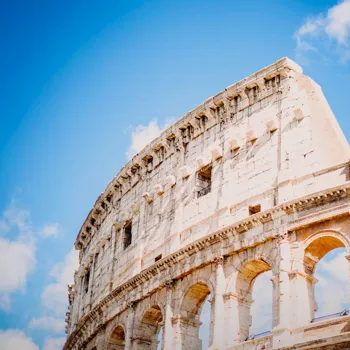
The Colosseum stands as a powerful reminder of the Roman Empire's grandeur, entertainment, and engineering. It showcases the architectural innovations of the Romans, like the use of concrete on grand scale that allowed them to construct such a massive and durable structure.
The Colosseum hosted gladiatorial contests, public spectacles, and even animal hunts, offering us insights into the social values, public life, and entertainment preferences of ancient Rome. It is evidence of past society.
Machu Picchu: Inca citadel revealing advanced engineering and culture
Machu Picchu in Peru, is a 15th-century Inca citadel situated on a mountain ridge 2,430 metres above sea level. It is located in the Cusco Region. It is believed that most of the population was killed by smallpox introduced by travelers.
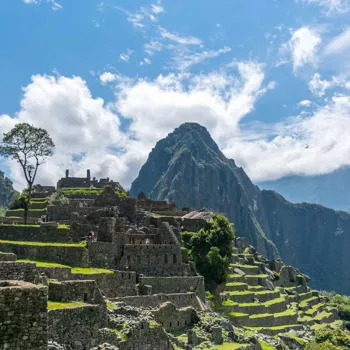
Often referred to as the "Lost City of the Incas," Machu Picchu is a remarkable example of Inca engineering, architecture, and agricultural practices.
Perched high in the Andes Mountains, this ancient city provides insights into the sophisticated social structure, religious beliefs, and agricultural skills of the Inca civilization.
The precise construction, the terraced farming, and the astronomical alignment of the structures all stand as testaments to their advanced knowledge. The site still offers lots of mystery to the students.
Exploring Chichen Itza, showcasing Maya's advanced civilization
Moving across the Atlantic we visit Chichen Itza, a large pre-Columbian city built by the Maya people in modern-day Mexico. Chichen Itza was one of the largest Maya cities and it was likely to have been one of the greatest cities in the Yucatán Peninsula..
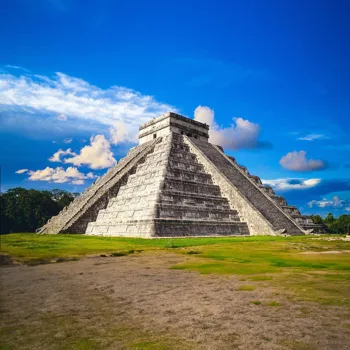
This archeological site shows us the advanced astronomical knowledge, mathematical skills, and artistic achievements of the Mayan civilization. The iconic pyramid of Kukulcán, with its precise alignment to the sun during the equinoxes, is a testament to their understanding of celestial movements.
Chichen Itza offers a glimpse into the religious beliefs, social structure, and cultural practices of the Maya people.
Robben Island symbolizes resilience and triumph over oppression
Finally, we journey to Robben Island in South Africa. It served as a prison for many years, most notably for Nelson Mandela, who was imprisoned there for 18 years of his 27-year sentence. Robben Island is a symbol of resilience, forgiveness, and the triumph of the human spirit over oppression.

A visit to this island, which was once a prison for political prisoners during the apartheid era, is a sobering reminder of the struggles for equality and freedom. It offers profound lessons on the importance of human rights, social justice, and the power of peaceful resistance.
Exploring historical sites for valuable lessons in history
These ten historical sites showcase so much that can be learnt from history. They are just a starting point. Each offers its unique lesson, enriching our understanding of the world and its peoples. So, pack your bags (or just your imagination) and get ready to go to these sites, and get educated!
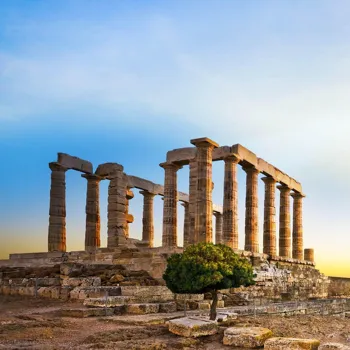
And not just these, there are many more.
AI Generated Content. Glance/InMobi shall have no liability for the content